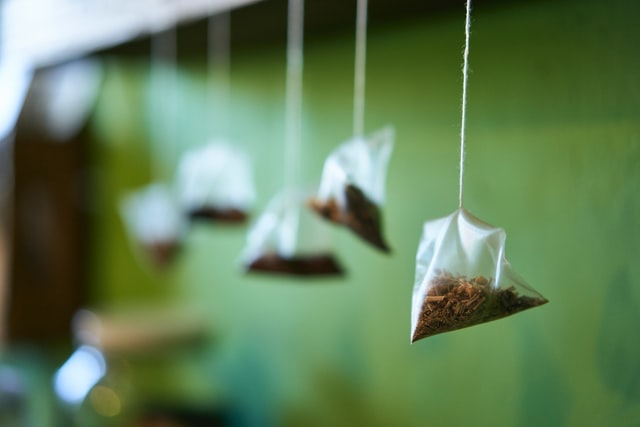In the first part of the “How to start selling tea online” guide, we talked about developing an idea, creating a name for your business and how to make sure you will meet all legal requirements to start selling tea online.
Once you register your company, there are still 7 steps you need to take before launching. Most of them require creative and technical skills and may require outsourcing some professional help.
Just like with the first 7 steps, you don’t need to follow the set order, but you will need to work on all of them before executing the last step – launching your online tea business.
Read what are the first 7 steps to a successful online tea business here.
How to start selling tea online – the next 7 steps to sell tea online
8. Source tea
Once you have registered a company, it’s time to work on your tea assortment. You may have already found a company to buy tea from in the beginning stages of your planning, but if you haven’t, now is the time to do that. You can source tea directly from farmers, or from a specialized wholesaler. There are benefits to both, and this will depend on your business model. Try samples first before making a bulk purchase.
Some questions to answer:
- Will you be able to source all your teas from the same place?
- Can you try samples before you make a bulk purchase?
- Do you want special blends, or you want to sell pure Camellia sinensis or herbal tea only?
- Is the wholesale company providing additional services to help you get started?
- How many teas will you need in the beginning and how many should you have in stock? Can they meet your requirements?
9. Create a logo for your online tea company
Logo is a part of the brand identity, and it should match both your name and company’s personality. Spend some time on deciding on the logo and ask for an advice from a professional designer. A good logo, just like the name, is memorable. It will be visible on your website, in all your communication, invoices and business stationary.
Some questions to answer:
- Can you do it yourself or do you need to hire a professional designer?
- How will your logo look on stationary?
- How will your logo look on packaging?
- Can you easily change the size of your logo, so it doesn’t lose its clarity?
- Is your logo too similar to someone else’s logo?
10. Work on packaging for your tea
Having good packaging is as important as having good tea, especially if you plan to sell your tea in supermarkets or to a hospitality industry. Packaging will also need to follow legal requirements – such as ingredients list, company name or special warnings. Furthermore, different types of packaging will preserve the freshness of tea differently and may not be suitable for all types of tea.
Some questions to answer:
- Are there any legal requirements for packaging?
- What type of packaging will you choose? Eco friendly? Paper? Plastic?
- Can you use your packaging as an advantage?
- Who will do your packaging? Is your wholesaler offering this service, or do you need to source it yourself?
- Do you need a designer to help you with a design?
- Will your packaging match your brand personality?
- Will your packaging keep tea fresh as long as possible?
Get help with packaging design.
11. Define your marketing strategy
Once you have your plan, your company is registered and you are waiting for your products, it’s time to work on a marketing strategy. Marketing strategy should include ways to achieve your goals, including attracting customers, selling process and customer service. Include details about all parts of the tea selling process – from advertising to shipping envelopes and boxes.
Some questions to answer:
- Which promotional outlets will you use to achieve your goal?
- Who is your target market?
- How will you attract customers?
- Where will you promote your products – on your own website, in magazines or social media?
- What is your customer service like?
- What is your content strategy?
12. Create content for your website and marketing purposes
Some of the most important content types are a website copy, product images, social media images, videos and articles. It’s a good idea to pay attention to SEO requirements before creating written content. Your website should be both optimized and match your brand’s personality.
Some questions to answer:
- Do you need product images, and will you be taking them by yourself?
- Do you have permission to use outsourced images?
- What should be on your website?
- Will you post content regularly or you only need a basic web copy?
- Do you plan to send newsletters?
13. Build a website
Although it’s always good to plan a website upfront, you will only be able to finish it once you have all the content ready. If you sell tea on your own website, you will likely need a web developer to make sure your shop is fully functional. Long term, it pays to invest more time and define a suitable budget create a fully functional website and good visuals. Keep in mind any potential additional content you may want to include later on too. You may not need a website if you plan to sell on marketplaces such as eBay or Amazon. In that case, a social media profile may serve as a simple website, too.
Some questions to answer:
- Which platform will you use?
- Do you need to hire a web designer?
- Is your website SEO optimized?
- Are there any legal requirements in your state/country or in the state/country where your visitors are from, such as GDPR?
- Did you test it many times before launching?
- What payment methods will you be using?
Get help with building a website for tea business.
14. Launch and promote your tea business
The last step and the first one into the world of selling tea online is to launch your website. Once your website is on, you will need to start promoting your products following your marketing and content plan, to achieve the goals you set out for your company in your business plan.
Some questions to answer:
- Do you have shipping policies in plan?
- Do you have customer service policies in plan?
- Is everything ready for a launch?
- How will you raise awareness about your new shop?
What comes after launching an online tea business?
Tea market is an exciting place to be in – it’s both challenging and rewarding.
Once you start your tea business, you will probably come back to revise some of these steps, especially your marketing and content strategy plans, shipping policies, your website and even your product line.
Tea industry is an ever-changing industry, with unique ingredients and blends being introduced regularly, and tremendous opportunity to use creativity and offer high-quality products.
Need more help to decide which teas you could sell? Contact us for more help.





